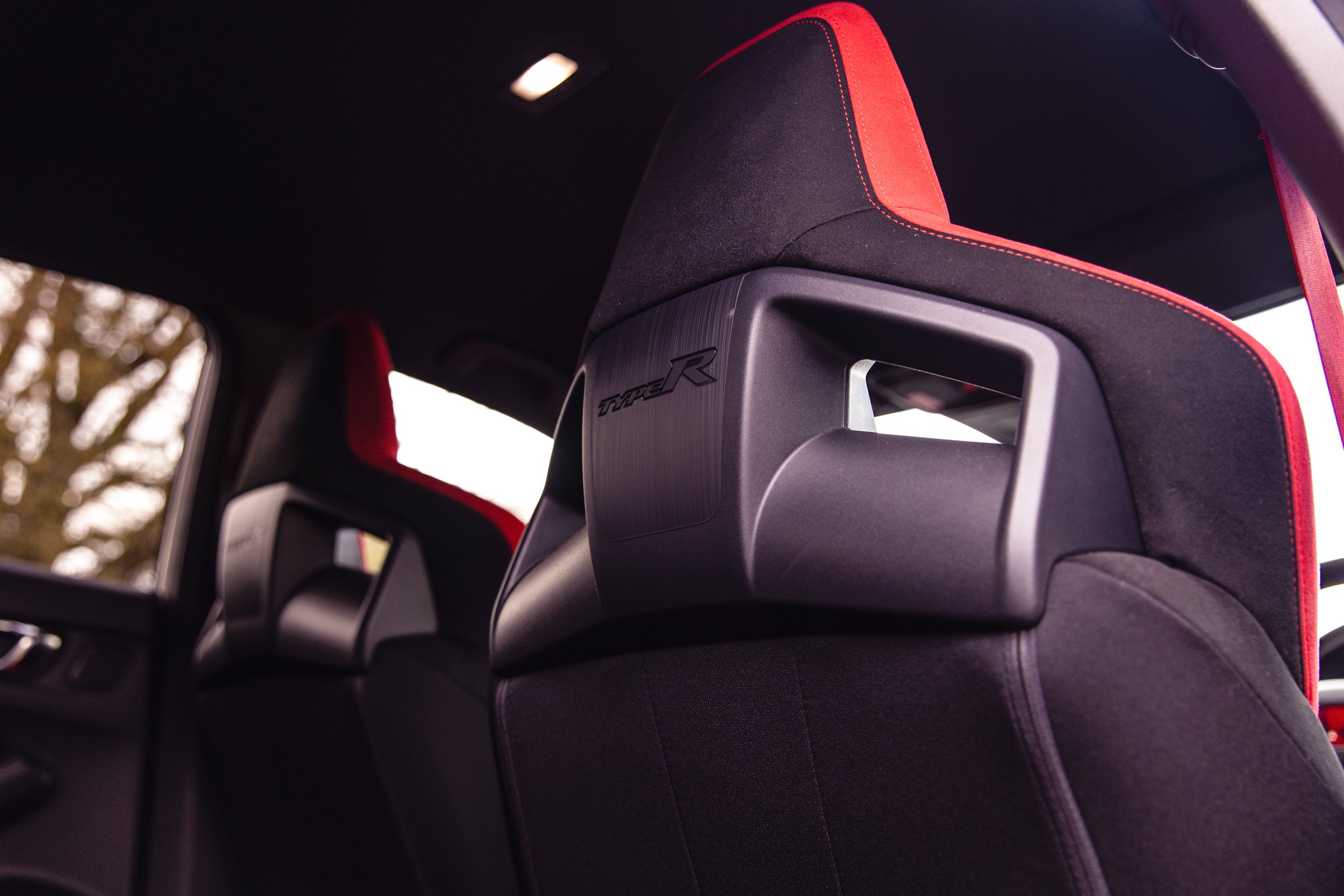ROAD TEST: Honda Civic Type R
The Honda Civic Type R is back, this time with some improvements and more sociable styling. Is it still the best hot hatch on sale?
PHOTOS: Dom Ginn
Regular readers of Redline will know that the FK8 Honda Civic Type R wasn’t just our favourite hot hatchback, but one of our favourite cars. So when news broke of a replacement in late 2022, we waited in anticipation for our chance to drive it. Fast forward to a rainy morning in March 2023 when an all-new FL5 arrived in Championship White, and the excitement was palpable. This wasn’t just any old road test, but a chance to see if Honda’s obsessive, sweat the small stuff approach had improved the recipe we loved so much, or whether they’d gotten complacent and actually made it worse – stranger things have happened.
Given the shoddiness of the weather, we knew that the serious road testing would have to wait for a day or two for things to dry out, but nevertheless, we trundled off in pursuit of backroads to see if we could capture a glimpse of what the new car was about. The FK8 was a bit of a handful in the wet so if anything, it served as a good test to see if the FL5 could fair better in soggy conditions.
A quick glance at the spec sheet would suggest little to no gains in wet weather performance. The FL5 is powered by the same K20C1 engine as before and it’s received a small bump in power, bringing outputs up to 324bhp and 315lb ft. It’s also marginally faster than the old car with a 0-62mph sprint of 5.4 seconds and a top speed of 171mph. There’s increased throttle response thanks to a flywheel that’s 18 per cent lighter than previous. The turbo now features a compact housing to improve efficiency, and the turbine has had its blade count and shape optimised to improve airflow and boost power. Like in the old FK8, the additional poke and sharper response is being distributed to the front wheels, so in theory, the increased performance should make for more wheelspin.
To our surprise, the FL5 found traction where the old car struggled. It’s not capable of getting all the power down, especially in the lower gears – it’s made by engineers not magicians – but under partial throttle it spins up its wheels less and you can ride the wave of torque for longer before having to change up a gear. However, when the roads are dry, the Type R is one hell of a straight line weapon. The Michelin Pilot Sport 4 S tyres (previously Continentals) dig in to the tarmac and the 2.0 litre 4-cylinder VTEC engine pulls all the way to the rev limiter. Once you’re rolling, it feels faster than the numbers on the spec sheet suggest, to the point where it feels like it could trouble sports cars in a straight line.
That said, the magic of the Type R has never been outright performance, but the way it devours a country road and makes a mockery of some rather special machinery in the process. Here in lies probably the biggest difference between the FL5 and the car it replaces – adjustable suspension. Like the FK8, it has options for Comfort, Sport and +R which ramp up in aggressiveness, but the issue with the old car was that you couldn’t slacken off the suspension independently, so you were forced to have the firmest set up if you wanted to utilise the other benefits of the +R mode.
With the new car, there’s now an Individual mode that allows you to customise the sound and response of the engine, the steering weight, and most importantly the suspension stiffness. The best set up for UK roads is the engine in +R, the steering in Sport and the suspension in Comfort. In this configuration you benefit from the most aggressive engine setting with finely weighted steering and a level of compliance that the old car wasn’t capable of when everything was in +R. The FL5 still feels tightly sprung and over really bumpy roads it does run out of suspension travel, but it also has fantastic body control and doesn’t get deflected quite as badly as the FK8 did. Unless the road is particularly treacherous, the Type R gives you the confidence to push on and extract the potential. It possesses just the right amount of performance for the public road without always risking your driving licence, and even at lower speeds, you still feel connected to the car and road surface.
Key to this is two things. Firstly, the steering has real precision to it and offers plenty of feedback through the rim. You don’t so much as drive but feel your way down a country road, with strong brakes and lack of understeer also helping you find confidence in the car. Secondly, the six-speed manual gearbox is the best you’ll find in any car at any price point. The ‘box in the old model was excellent, but it’s also another area where the engineers at Honda sought to make small improvements. The gear knob is now 230g heavier than previous and the shift feels even slicker than before while retaining its tactile, mechanical feel. It also has an auto-blip function for perfect rev matches on the down change, or you can turn it off and heel and toe yourself. Rowing the shifter around is one of the highlights of the package and helps you feel properly dialled in to the car and connected to the engine.
Another area that has taken a step on is the refinement. The old model had an issue with road noise and the interior left something to be desired, especially the infotainment graphics that had more than a whiff of PS2 about them. Thankfully, the cabin in the FL5 feels of higher quality, if still lacking compared to German rivals. However, the focus has been on the major touch points that you interact with most often – steering wheel, gear stick, pedals and seats – and it’s paid off. The seating position is perfect with excellent bucket seats that hug you in all the right places, the steering wheel is trimmed in Alcantara, and the gear stick and pedals have a weighty, metallic feel to them. It’s these small but essential tactile delights that help you feel more connected to the car, even if you don’t realise it at the time. And praise the hot hatch Gods, the rolling refinement and shoddy graphics have been improved. But then, Honda had to give the interior a significant overhaul because the new Type R costs around £47,000.
This leads us neatly on to how expensive the Type R has become, especially when the old FK8 represented something of a performance car bargain at around £35,000 with all the options included. You could accuse Honda of getting greedy and cashing in on the fact that the keener driver now doesn’t have many options to choose from in the hot hatch market. But to think of the Type R as a £47,000 Honda Civic or fast family hatch, is missing the point. Of course, it’s those things, but it’s also much, much more. The Type R remains one of the best performance cars on sale. You can have as much fun in it as you can supercar, but it’s also a perfectly capable daily driver with a cavernous boot and ISOFIX points. One moment you can be driving around at a leisurely pace, minding your own business, and in the next breath you can be bullying backroads and leaving far more expensive performance cars for dust. The FL5 Type R is a scintillating driver’s car and the hot hatch king, and for that Honda, we salute you.








